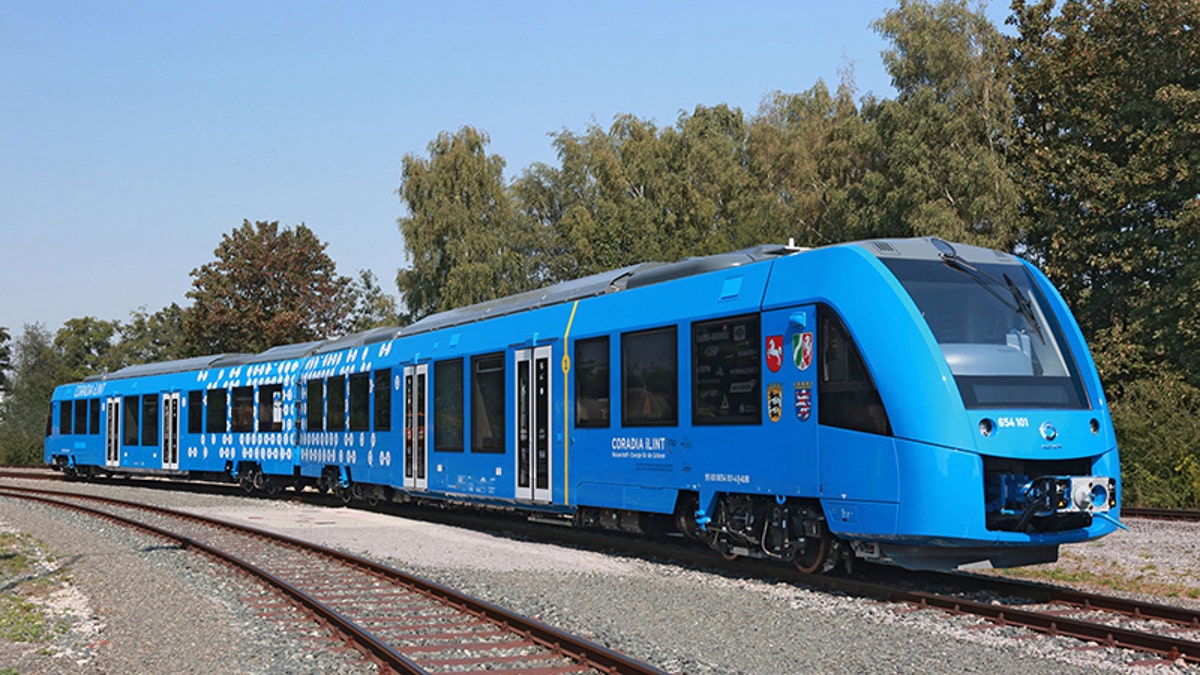
The Coradia iLint (Alstom).
Plans for the Coradia iLint, a hydrogen-powered, zero-emission train in Germany could revolutionize rail travel.
Alstom, the company behind the new trains, says the iLint is the world’s first low-floor passenger train that uses a hydrogen fuel cell to create its electricity. The trains – which are described as 60 percent less noisy than diesel trains and can travel up to 500 miles per day – successfully completed test runs back in March, and will begin carrying passengers in early 2018.
The Coradia iLint uses the same equipment as a diesel train, except it runs on hydrogen. The hydrogen is combined with oxygen in large fuel cells on the train’s roof to produce electricity, which in turn powers lithium ion batteries. Unused energy can be stored for later use – and it only emits steam and water. The train also can carry up to 300 passengers.
DRONE SWARMS DEPLOYED IN AERIAL TEST
Alstom is hoping the iLint eventually will phase out all of Germany’s diesel trains within the next 20 years. Germany is betting the new trains will cut back on its greenhouse gas emissions, which have been as high as 906 million tons of carbon dioxide a year.
Other countries, including the U.K. and the Netherlands, reportedly have expressed interest in the new trains.
But according to independent energy expert and former software engineer Roger Arnold, the Coradia iLint might not measure up to the hype as far as energy efficiency and saving the planet goes.
“If one completely ignores the question of how the hydrogen is produced, there is no real downside,” Arnold told Fox News. “It’s all known technology, and the cost of the hydrogen fuel cells and tanks are probably less than the cost of the diesel engines and generators they’re replacing. Clean and quiet, no diesel fumes for passengers to breathe – what’s not to like?”
Apparently quite a bit, Arnold said, depending on how the hydrogen is produced.
It takes a great deal of energy to produce hydrogen, which does not occur on Earth naturally.
FACEBOOK IS BUILDING A HELICOPTER TO HELP DELIVER INTERNET ACCESS IN EMERGENCIES
According to Arnold, when hydrogen is produced by electrolysis of water, it requires 2.5 times more electricity than it would if the train were powered from overhead wires or storage batteries. At the very least, this raises the cost per mile travelled.
But if the electricity used for electrolysis of water is from the grid, and the grid is not powered by 100 percent carbon-free energy, then the indirect carbon emissions per mile traveled are also 2.5 times greater than they would be for batteries or overhead wires.
“With the actual mix of generation on the European grid, the indirect carbon emissions of these trains, running on electrolytic hydrogen, will be higher than the direct emissions for diesel trains,” Arnold explained. “The approach is good for passengers and people living near the tracks, but bad for the planet.”
FOR THE LATEST TECH FEATURES FOLLOW FOX NEWS TECH ON FACEBOOK
So while the trains might look good at first glance, in the end they may be worse for the environment than diesel trains. But that could change some time in the future.
“Why do the Germans even concern themselves with electrolytic hydrogen, which I believe is the method they expect to use to make the hydrogen for the new trains? There are multiple issues,” Arnold said. “But I think the bottom line is that they are anticipating a day when their grid will be powered totally by renewables and will be 100 percent carbon-free. Then their electrolytic hydrogen will also be 100 percent carbon-free
and ‘renewable,’ but they have a long way to go to get there.”




















